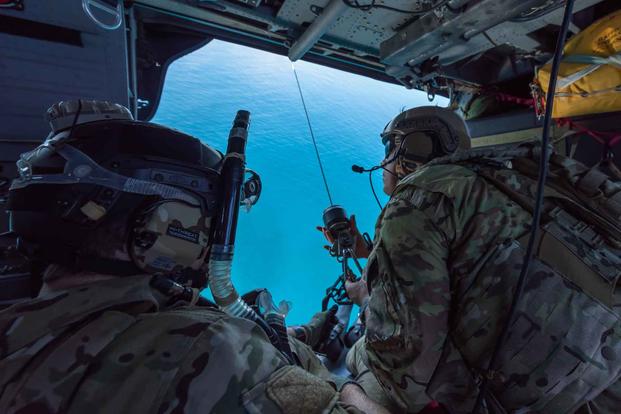Two more women are attempting to enter the U.S. Air Force's combat controller and pararescue (PJ) battlefield airman career fields.
The women, who were not identified for privacy reasons, are the first to enter the official training pipelines of those career fields, according to 1st Lt. Jeremy Huggins, a spokesman for the Special Warfare Training Wing.
However, they are not the first two female candidates to attempt PJ or combat controller training overall, he said Friday.
"One candidate is pursuing pararescue, [but] she is currently not in training," Huggins said in an email. "The most common reasons for this are medical hold, administrative hold or waiting for a training class to begin. The second woman is a combat control (CCT) candidate, and she is currently in the Special Warfare Preparatory Class."
Related: 1st Enlisted Woman to Attempt Air Force Special Recon Training Dropped from Program
The prep class runs eight weeks. Once she graduates, she will proceed to the Assessment and Selection (A&S) course, he added.
The two new candidates make the 10th and 11th women to attempt any type of battlefield courses under the Special Warfare Training Wing, and the 11th and 12th to express interest in the program since the Defense Department opened combat career fields to all in December 2015.
Of the female candidates who have previously attempted to join the service's special warfare program, seven pursued Tactical Air Control Party (TACP) training; one tried pararescue training. Another woman recently dropped from the special reconnaissance program -- previously known as special operations weather team, or SOWT -- in August, according to Air Education and Training Command.
The 10th, who attempted to become a combat controller, left the program, Huggins said. AETC previously mistakenly said that she had graduated the prep course.
The battlefield airmen career fields are comprised of special tactics officer, combat rescue officer, combat controller, pararescue, special reconnaissance, TACP specialist and air liaison officer.
Huggins said it's no secret that these career fields are tough.
"There is no specific timeline as to when we'll see our first woman serving as a Special Warfare airman in one of the seven combat-related career fields," he said. "From start to finish, it may take up to two years for a woman to join an operational unit because of the Air Force's natural timeline to recruit, access, select and train."
Earlier this year, Lt. Gen. Brian Kelly, the Air Force's deputy chief of staff for manpower, personnel and services, said in written testimony before the Senate Armed Services subcommittee on personnel that attrition in these career field pipelines has been high because of the grueling training.
Attrition across the elite training pipelines ranges between 40 and 90 percent, depending on specialty, he added.
"Consequently, we do not foresee large numbers of females in operational units in the near term," Kelly said in February.
Editor's Note: This story has been updated to clarify how many women have attempted Air Force Special Warfare Training.
-- Oriana Pawlyk can be reached at oriana.pawlyk@military.com. Follow her on Twitter at @Oriana0214.
Read more: Midshipmen Establish Study Group for Satanic Temple Beliefs at US Naval Academy













